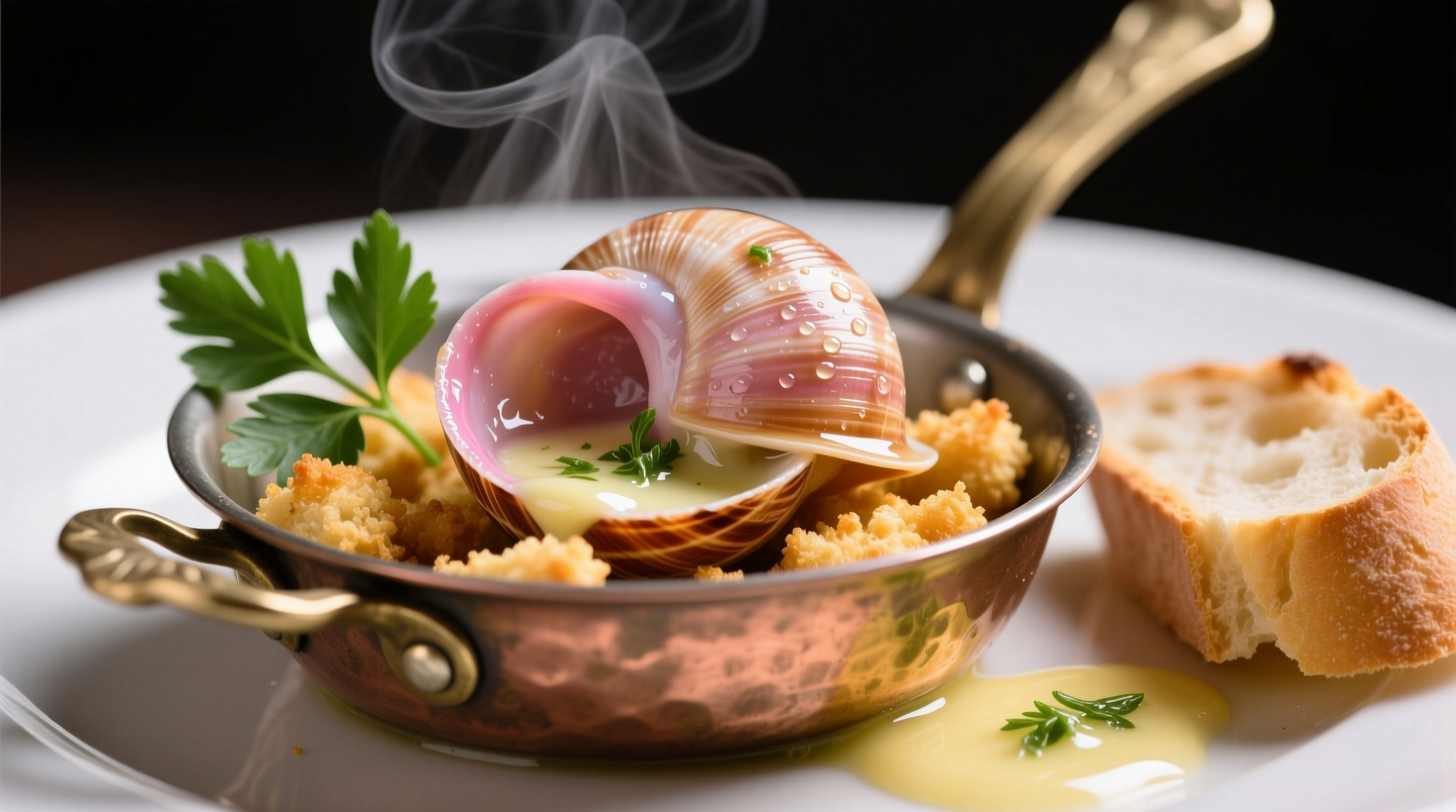Curious about the mysterious French delicacy that appears on menus worldwide? You're not alone. Each year, millions of diners wonder what does escargot taste like before taking their first bite. Forget the misconceptions - this isn't slimy or overpowering. Properly prepared escargot delivers a surprisingly mild, elegant dining experience that has captivated palates for centuries.
Understanding Escargot: More Than Just Snails
Before exploring the flavor profile, it's essential to understand what we're actually eating. Culinary escargot refers specifically to Helix pomatia (Roman snails) or Helix aspersa (garden snails), not the common garden variety. These land snails undergo rigorous purging and cleaning processes before cooking, eliminating any earthy aftertaste you might expect.
The Flavor Profile Breakdown
When properly prepared, escargot offers a sophisticated flavor experience that surprises first-time eaters. Let's break down the components:
- Primary taste: Mild, slightly sweet white meat similar to clams or mussels but less briny
- Texture: Tender yet substantial, comparable to well-cooked artichoke heart or portobello mushroom
- Aroma: Earthy notes reminiscent of forest mushrooms, especially when served with traditional garlic-parsley butter
- Mouthfeel: Smooth with a slight resistance that gives way pleasantly when chewed
| Seafood Comparison | Flavor Similarity | Texture Comparison |
|---|---|---|
| Escargot | Mild, earthy, slightly sweet | Firm yet tender, mushroom-like |
| Clams | More briny, oceanic | Chewier, rubbery when overcooked |
| Mussels | Stronger seafood flavor | Softer, more delicate |
| Octopus | Neutral, takes seasoning well | Firm, can be tough if not prepared properly |
How Preparation Transforms the Taste
The culinary magic of escargot happens during preparation. French chefs have perfected techniques that elevate this simple ingredient:
Traditional preparation involves simmering cleaned snails in wine, herbs, and aromatics before finishing in the iconic garlic-parsley butter. This process serves two critical purposes: it tenderizes the meat while allowing it to absorb complementary flavors. The butter doesn't mask the escargot's natural taste but enhances its subtle qualities.
According to culinary research from INRAE (French National Research Institute for Agriculture, Food and Environment), the purging process removes potential off-flavors, while the cooking method denatures proteins that could create undesirable textures.
Context Matters: When Escargot Shines
Several factors determine whether your escargot experience will delight or disappoint:
- Freshness: Live-purged snails yield superior texture compared to canned varieties
- Cooking time: Overcooking creates rubbery texture; perfect timing yields tender results
- Seasoning balance: The classic garlic-parsley butter should complement, not overwhelm
- Temperature: Served piping hot to maximize aroma release
Many first-time tasters report disappointment when encountering poorly prepared escargot - often overcooked or drowned in excessive butter. Authentic French preparation follows precise timing: typically 10-12 minutes in the oven after being stuffed in their shells.

Common Misconceptions Debunked
Several myths persist about escargot's flavor:
- "It tastes like dirt": Properly purged snails eliminate earthy flavors - this misconception comes from improperly prepared specimens
- "It's slimy": Correct cooking yields firm, dry texture - sliminess indicates undercooking
- "It tastes strongly of snail": The meat itself is quite neutral, serving as a canvas for seasonings
First-Time Tasting Tips
Approach your first escargot experience with these practical suggestions:
- Start with traditional French preparation (garlic-parsley butter) rather than experimental variations
- Use the proper utensils - a two-pronged fork and small hook make extraction easier
- Enjoy with crusty bread to soak up the flavorful butter
- Pair with a crisp white wine like Chablis that complements without overwhelming
- Take small bites to appreciate the texture and subtle flavors
Remember that cultural context influences perception - in France, escargot appears regularly on family dinner tables, not just in fancy restaurants. This everyday context helps French diners appreciate its subtle qualities without intimidation.
Why Escargot Endures as a Culinary Classic
The enduring popularity of escargot across centuries speaks to its unique culinary value. Unlike stronger seafood options, escargot offers a versatile base that works equally well as an elegant appetizer or part of a sophisticated main course. Its nutritional profile - high in protein and low in fat - adds to its appeal in modern dining.
Understanding what escargot tastes like removes the mystery and opens the door to appreciating this culinary tradition. When prepared with care, it delivers a refined dining experience that continues to captivate food enthusiasts worldwide.
Frequently Asked Questions
Is escargot supposed to taste fishy?
No, properly prepared escargot should not taste fishy. It has mild, earthy notes similar to mushrooms with subtle oceanic undertones. A strong fishy flavor indicates improper preparation or poor quality ingredients.
Why does my escargot taste rubbery?
Rubbery texture typically results from overcooking. Escargot should cook for 10-12 minutes maximum after being stuffed in shells. Properly cooked escargot yields gently when bitten, similar to al dente pasta or tender mushrooms.
Does escargot taste better with garlic butter?
Traditional garlic-parsley butter enhances escargot's natural flavors without overwhelming them. The butter's richness complements the mild meat, while garlic and herbs provide aromatic complexity. However, high-quality fresh escargot can stand beautifully on its own with minimal seasoning.
How does canned escargot compare to fresh?
Canned escargot offers convenience but often lacks the delicate texture of fresh. According to culinary research from INRAE, fresh-purged snails maintain better texture integrity. Canned versions can sometimes have a slightly metallic aftertaste from the container.











 浙公网安备
33010002000092号
浙公网安备
33010002000092号 浙B2-20120091-4
浙B2-20120091-4